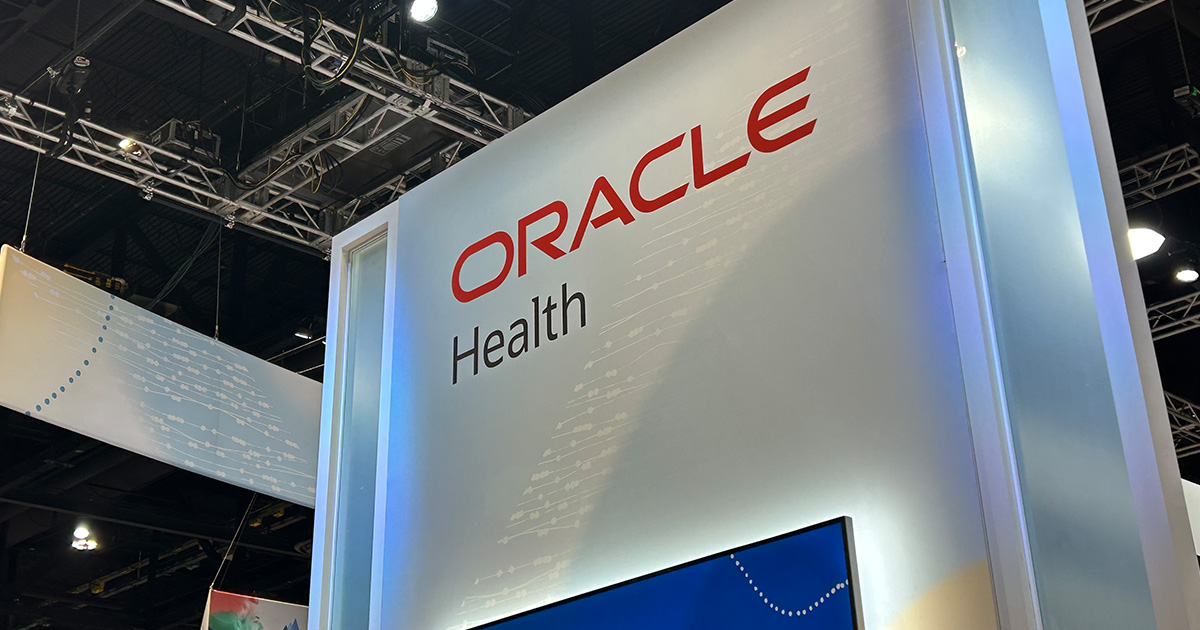To say that John Glaser has had a front-row seat in the health IT arena over the past 10 years – and the 10 years before that – would be wrong. He’s been in the trenches, sleeves rolled up. Glaser has advocated for the adoption of EHRs through his work with CHIME, HIMSS, AMIA, the eHealth Initiative, Markle Foundation and before congressional committees. He also did a stint as adviser at the ONC. As CIO of Partners HealthCare in Boston, he guided the health system into the digital age – long before many other care providers across the country could even conceive the possibilities. Today, he continues his HIT work through these many channels also as CEO of the Health Services Business Unit of Siemens Healthcare.
[See also: John Glaser joins Siemens as CEO of health IT unit.]
We talked with Glaser recently about the vast industry change he has helped to achieve over the past decade or two, and also to consider the possibilities for the future.
Q. What have been the challenges and the biggest change in health IT?
A: Over this last decade, and probably the decade before that, there have been challenges that are consistent. Dealing with new technology is a consistent challenge, whether mobile now or Web in years gone by. Even within each organization, their engaging people, revamping processes, clinical, revenue cycle – all that stuff is a consistent challenge. Helping an organization sort of design its direction – where should we go, where should we put our resources, how do we monitor the environment, how do we make sure it’s all working out the way we thought it should.
I think there’s one factor that is materially different in the last 10 years, it’s the role of government in HIT. You and I go back before the creation of ONC under President Bush, and now we have enormous influence whether it’s through the meaningful requirements, or certification, or the focus on interoperability, health information exchange and the standards that go with that – more recently EHR safety issue and the reporting of errors. There’s still a conversation about should government regulate all that. Government has always had a strong hand in privacy and security with the administrative transactions.
I go back to the early days of CHIME, and engaging the federal government just wasn’t on the radar screen. Now it’s really on the radar screen at CHIME and HIMSS and AMIA and all those other folks.
[See also: CHIME honors John Glaser with Lifetime Achievement Award.]
Q. Would health IT have gotten to this point without government involvement?
A: Well, yes, you go back a little before 10 years ago, I was involved in the eHealth Initiative and the Markle early work. The question at the time why wasn’t adoption further along. There were lots of facts, but two fundamental ones. One is that the financial incentives just weren’t there. There’s no upside. There’s downside expense, but there’s no upside in terms of revenue. And the second is, a lot of the providers – a lot of the hospitals, the physicians – didn’t have the IT resources; they didn’t have a staff. Those are two big barriers.
And, so you say, well, who should step in, and there’s only one big gorilla, and that’s the federal government. They had to. They’re the only entity that could, and they had two good rationales for it. One was, well, government, it steps in when markets fail and, second, it’s the largest purchaser of care. If you want my money for Medicare or Medicaid, this is what I want. It stepped it, and I think it’s a smart thing to have done. We could have puttered along and adoption rates maybe would have climbed to 11 or 12 percent. We would have seen nothing like we’ve seen in the past five years. It’s really impressive.
I’m nervous. There was an article that appeared in the American Medical Association Journal. IT is driving cost. There has not been yet the kind of efficiency achieved to cover that cost. So we’ve got to be careful here that we’re not entering an era in which the leadership of providers and government, we spend all this money. I think the government did a great job and necessary job to get the hockey stick, and now the trick is to shift to emphasize other things.
[See also: Glaser to advise ONC chief on HITECH.]
Q: What do you wish had gone differently?
A: I thought the meaningful use program and the way that was executed was really nicely done, so I give credit to all the ONC coordinators: Brailer, Kolodner, Blumenthal, and Farzad recently. It was really nicely pulled together. I’m not sure I would have changed that.
The only thing I might have done differently is signal a little earlier (so, this would be about a year or two ago) that we were now going to have to shift, and that that shift might occur around the timing of Stage 3 of meaningful use. So that we as an industry allow meaningful use to sort of recede into the background with more emphasis on getting the yield and understanding on how XXXIt’s not too late to do that. We can still do that.
Q: What about interoperability?
A: I was in front of the Finance Committee back in the summer, and one of the questions that Senator Baucus asked is what’s the deal with interoperability? How come we’re not seeing more information exchange? He’s right. It’s not nearly as extensive as one might have hoped, but I think it’s incredibly complicated and incredibly messy. Frankly, the HIE-interoperability area will be chaotic through the rest of this decade. The analogy I like to use is, if you go back to the 1900s, there were 26 different power companies in the city of Chicago. It took a while for that chaos of inconsistency – different standards, etc. – to settle in to a much more efficient highly standardized environment. But sometimes you’ve got to go through the chaos before you go to the broad industry standardization. That’s a rough message to tell Congress. It’s a really tough political message.
Q: At one point you said you were worried that we would go to fast. What are your thoughts on that today?
A: I deal with a customer base that in a lot of cases is really stressed. They’re trying to do ICD-10. They’re trying to do meaningful use, Doing those two things is not the only thing on their agenda. At the same time, there’s a reimbursement squeeze, so they can’t add staff. We’re pushing them hard under consistently stressed conditions.
Q: What worries you now?
A: I worry about a couple of things. I worry about sheer fatigue on the part of people, which causes them to leave. So you lose talent; you lose doctors. We need all the talent and hardworking people that we can possibly have in the next decade. The second, is that people progressively blow off the meaningful use program. They say, “the incentives aren’t strong enough past Stage 1, the penalties, you know, they'll get reversed, and I just can’t do Stage 2.” We might see people withdraw from the program. If you go too fast, you get drop-off – drop-off by vendors, drop-off by providers, which means we plateau. IT goes back to leveraging the technology. People are just getting it up and running and not inherently going after the process change. It’s being used at 40 percent, 60 percent, 80 percent, whatever the meaningful use requirement is, but are they more efficient? Is the quality up?
I think the biggest worry is that what we don't do as an industry is really start to work the technology to get the care gains. The biggest worry is that the real purpose for which we are all here, which is to make the care better, will not have succeeded to the degree that it should have.
Q: Talk to the pace of the federal intitiatives
A: I would have liked to have seen the extension of Stage 2 by a year. I think there’s a time, and I think it’s next year, for the industry to say, “let’s take a little of a step back, and look at what have we done, and take credit for all the good things. Let’s look at what hasn’t happened and what should have happened and what risks are emerging that we need to address, rather than just pressing ahead. I think a little bit of time-out and reflection would be a useful idea.
Q: Perhaps people are afraid to lose the momentum?
A: An inflection point has occurred and the momentum is unstoppable at this point, I tend to think. If you think momentum means stall, I don’t think it’s going to stall. It will keep going. It’s just a question of going thoughtfully along the way.


